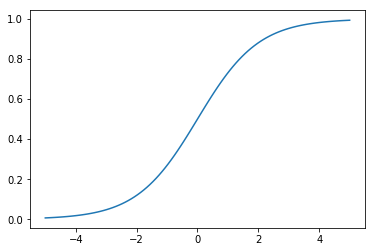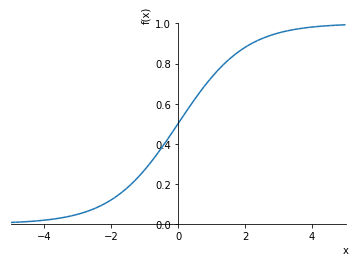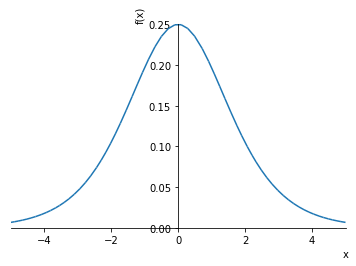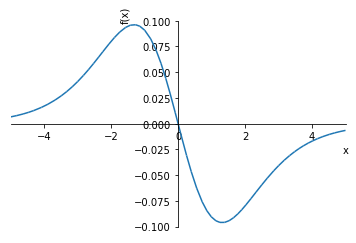Pythonでシグモイド関数
$$ f(x) = \frac{1}{1+\exp (-x)} $$
について調べます。
はじめにNumPyで実装しプロットしてみます。
%matplotlib inline
import matplotlib.pyplot as plt
import numpy as np
def sigmoid(x):
return 1 / (1 + np.exp(-x))
x = np.linspace(-5.0, 5.0, 100)
y = sigmoid(x)
plt.plot(x,y)
plt.show()
0から1の間で単調に増加する形状になります。
SymPyでシグモイド関数を調べる
関数の形を理解するためには微分をする必要があります。SymPyを使うと解析解を求めつつ簡単にグラフ化できます。
%matplotlib inline
import matplotlib.pyplot as plt
import sympy as sym
sym.init_printing()
Jupyter notebookで数式を表示させるために、sym.init_printing()を実行します。シグモイド関数をプロット後、1次導関数、2次導関数を求めます。
x, y, dy, ddy = sym.symbols('x y dy ddy')
y = 1 / (1 + sym.exp(-x))
sym.plotting.plot(y, (x, -5, 5))
1次導関数
dy = sym.diff(y, x, 1)
dy
$$\frac{e^{- x}}{\left(1 + e^{- x}\right)^{2}}$$
sym.plotting.plot(dy, (x, -5, 5))
2次導関数
ddy = sym.diff(y, x, 2)
ddy
$$\frac{e^{- x}}{\left(1 + e^{- x}\right)^{2}} \left(-1 + \frac{2 e^{- x}}{1 + e^{- x}}\right)$$
sym.plotting.plot(ddy, (x, -5, 5))



